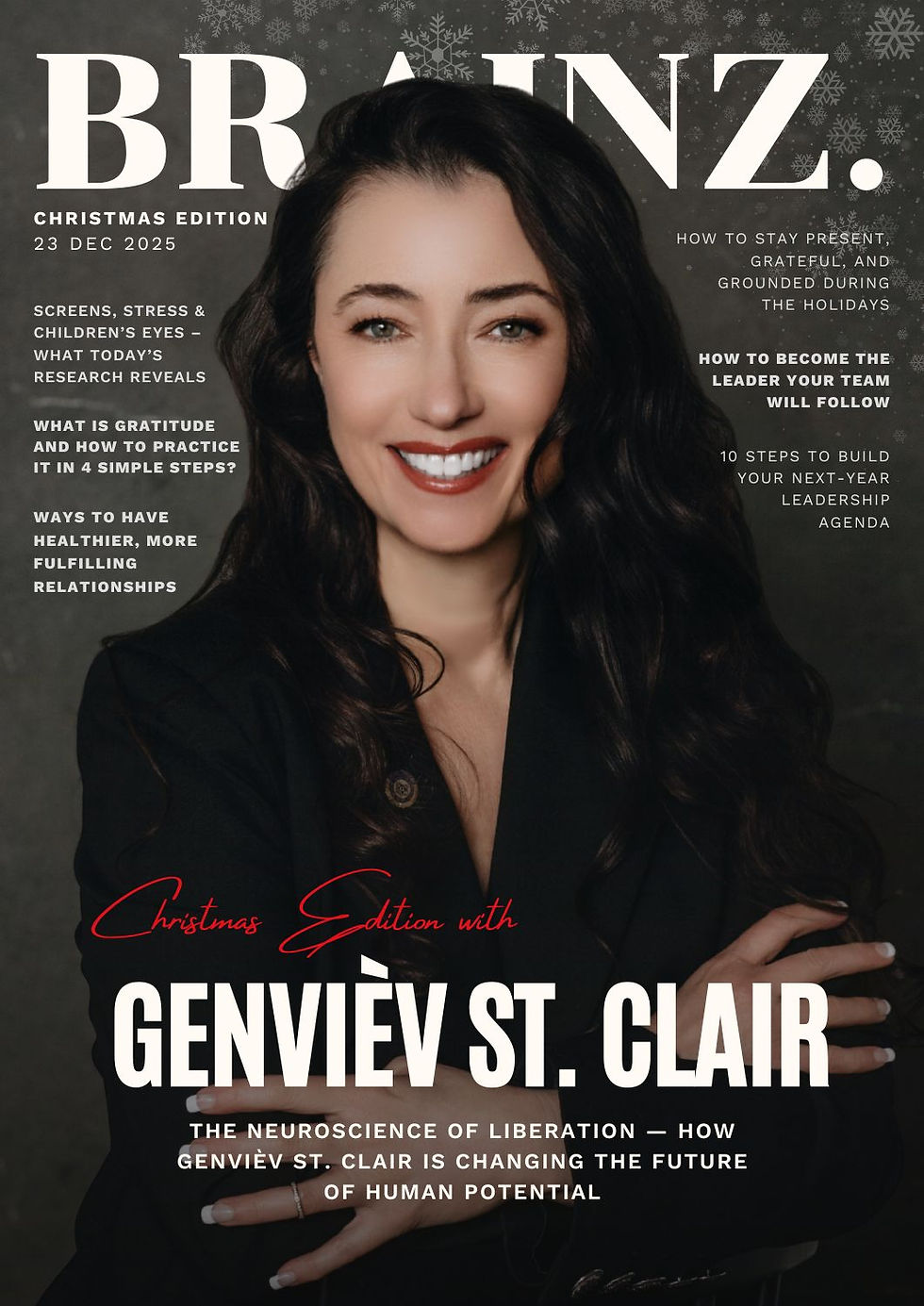5 Tips For Embracing Change
- Brainz Magazine

- Feb 16, 2022
- 3 min read
Written by: Sass Allard, Executive Contributor
Executive Contributors at Brainz Magazine are handpicked and invited to contribute because of their knowledge and valuable insight within their area of expertise.

You’ve probably heard that change is the one constant in life. If that’s true, why are we so resistant to it?

There are a number of factors:
Our brains are set-up to be practical and protective. This means we tend to repeat existing patterns. It feels safer to stick with the tried and tested even when we know something is not serving us.
We’re unclear on what’s in it for us ‒ we often assume the setbacks outweigh the rewards.
Uncertainty can make us feel unsafe. When we feel unsafe, we start disconnecting from our emotions.
Change threatens to disrupt our steady-state or, flow.
Embracing change requires an adjustment in mindset. We use the term a lot, but what does it mean? The Cambridge Dictionary defines mindset as ‘a person’s way of thinking and their opinions’. It’s a set of beliefs that frames how we see ourselves, others and the world around us.
Dr. Carol Dweck – a leader in the field of mindset and professor of psychology at Stanford University – coined the terms fixed and growth mindset to describe belief systems about our capacity to change, grow and develop over a period of time.
It was originally believed that our brains were hard-wired, implying that our mindset could not be changed. Research has shown as we engage in new learning and activities, our brains create new neural pathways that continue to strengthen with recurring actions so that behaviour becomes the norm.
With that in mind, how do we go about embracing change?
It’s important to come from a state of acknowledging that our mindset needs to adjust. Where situations continue to produce results that we don’t want, we usually know we need to make a change somewhere. The key is knowing that change isn’t just practical such as upskilling or changing routine. It’s an emotional one too.
The way we think, feel and behave is usually shaped by past experiences which can significantly affect our lives and be self-limiting. Working out why we want to change and what the blockers are can help us untangle our feelings and see things more clearly.
Ask yourself what’s stopping you – start to identify those self-imposed obstacles and of these, which are within your control to overcome. Look at how you could go about it and what habits need to be created to move forward.
Here are five tips to help adapt to a change in mindset:
Pause & Reflect
This provides headspace to raise awareness within yourself about the changes you wish to make. During this process, be curious! Who are you being? What’s stopping you? A journal is a good way of capturing your thoughts and allows you to look back to see if there are any recurring themes and identify where you can create new habits.
Motive
This is your reason for change. It’s about increasing your desire and wanting to take a risk. In what way will your life improve if you make these changes? What will life look like if you don’t?
Knowledge
Learn how to break negative patterns and develop new ones. Learning how to open yourself up to new ways of perceiving, behaving and adapting. What are these experiences teaching you?
Values
Forming a clear idea of what you stand for helps shift you from wanting to having. Values act as your benchmark and supports a change mindset when your belief system and goals aren’t being served. What is your desired outcome?
Failure
It’s ok to fail. There’s value, learning and growth in failure. Knowing that it’s likely to happen, will help you prepare for it. Use the opportunity to reflect and find a new way forward.
Change isn’t straightforward but with the right support, we have choices and there will almost always be a starting point available to us.
The next time you’re faced with a challenge that isn’t serving you, ask yourself: what could I do now that my future self will thank me for?

Sass Allard, Executive Contributor Brainz Magazine
Sass is an accomplished change specialist who transforms organisations by focusing on their people and culture. With a background in publishing and over 20 years of experience in roles focusing on building relationships, she works with high-performing teams and individuals who are looking for growth and a new sense of direction.
As a certified coach, she helps people discover how to become unstuck; inspired for the future and prepped with the creative resources needed to move forward.
Her approach to change is human-centred, pragmatic and mindful. Believing in purpose before position, she uses this to bring a sense of alignment and motivation that’s rooted in integrity and creativity.
Passionate about helping people thrive with change, Sass says she’s at her happiest when she’s free to explore, learn and connect with others.










.jpg)